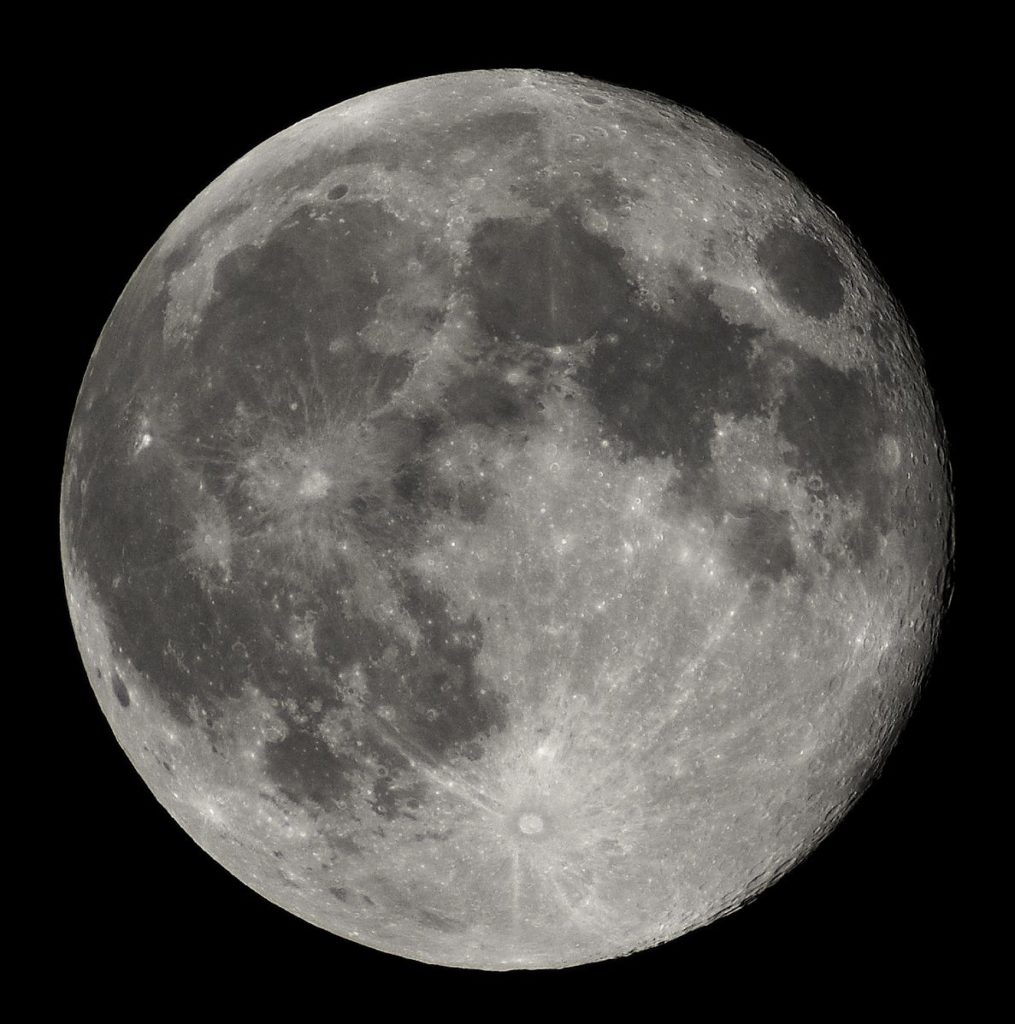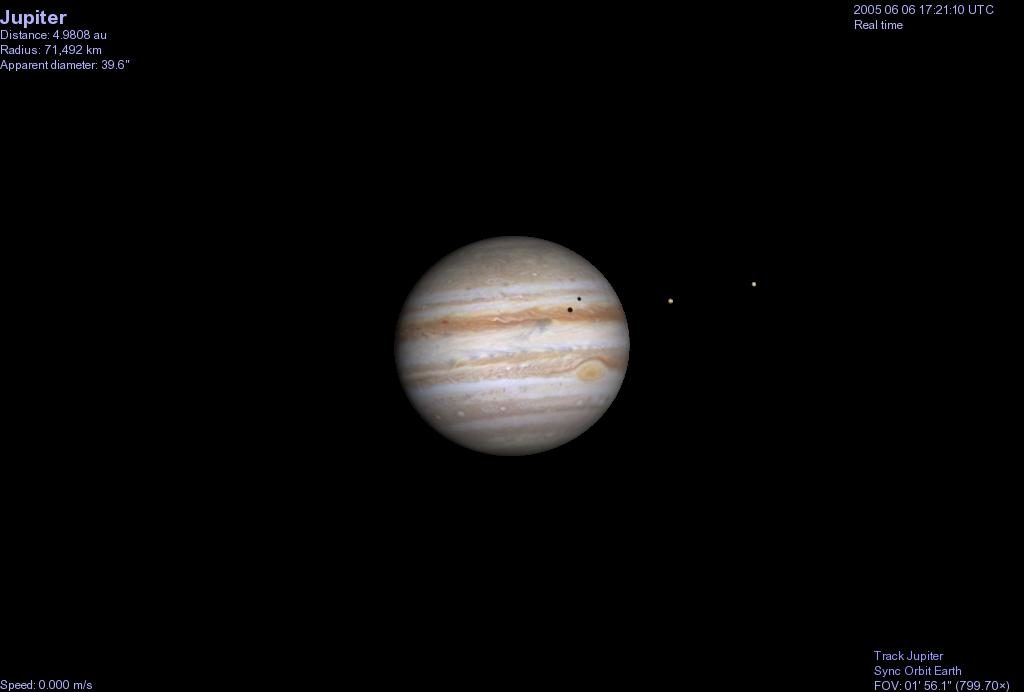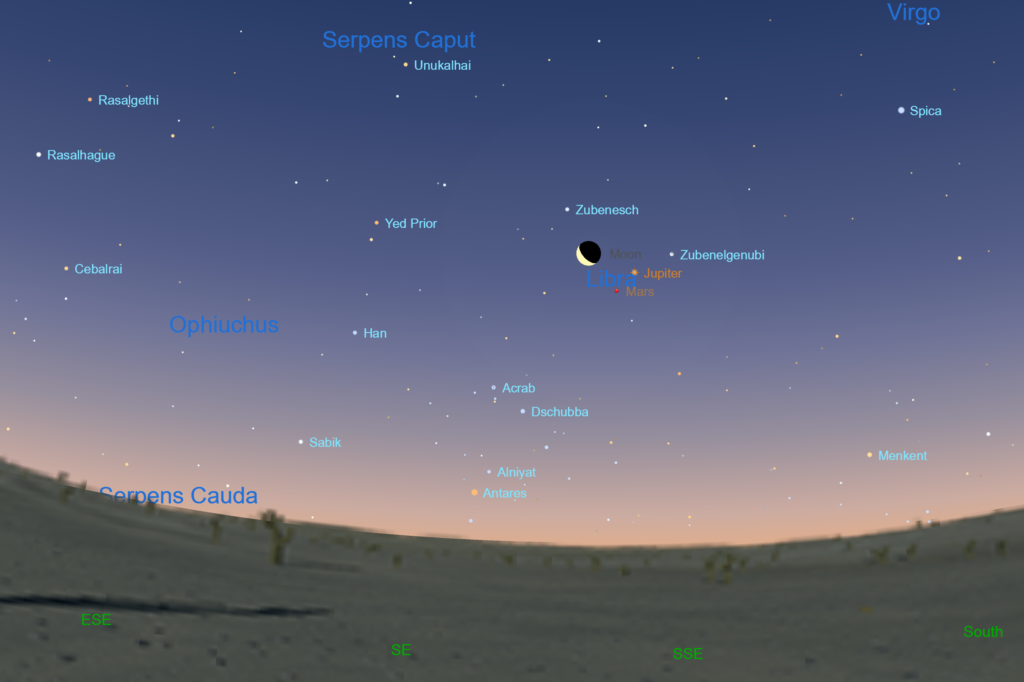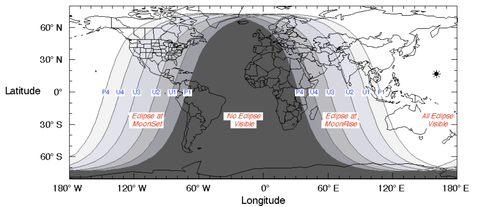
Happy New Year! 2018 begins with a busy month of stargazing. January brings several bright planets back to the sky, especially in the pre-dawn hours. There are two full Moons this month, the second of which is completely eclipsed for a short time for observers over half the planet. And telescopic observers get to see three separate double-shadow transits across the face of Jupiter. Here’s what to see in the night sky this month…
1 January 2018. Mercury reaches greatest western elongation. The little planet is 23° west of the Sun and remains visible in the constellation Ophiuchus for much of the month over the southeastern horizon before sunrise. A pair of binoculars will help you glimpse the planet in the brightening morning sky.
1 Jan. The Moon reaches perigee (its closest approach to Earth) for the month at around 22h UTC. It lies at a distance of 356,565 km. As this perigee nearly coincides with a fully-illuminated Moon on the first night and second morning of 2018, this will be the largest full Moon of the year.
2 Jan. Full Moon, 2:24 UT
3 Jan. The Earth lies at perihelion, the point in its orbit when it is nearest the Sun at a distance of 147,097,233 km.
3-4 Jan. The early morning of January 4 features a brief but sometimes spectacular meteor shower. Named after the now-defunct northern constellation Quadrans Muralis, the Quadrantids often feature more than 100 meteors per hour. Conditions are not favorable this year, however, as a waning gibbous Moon brightens the sky. But if you’re up stargazing in the early morning hours of January 4, then take a look. You never know. You can see the meteors anywhere in the sky. They trace their paths back to a point north of the bright star Arcturus which rises in the northeast in the pre-dawn hours.
4-5 Jan. Observers with a telescope can see a double shadow transit as the shadows of the moons Europa and Ganymede pass across the face of Jupiter. The double transit runs from 2:34 UTC to 3:37 UTC on January 5.

5 Jan. The bright star Regulus in the constellation Leo passes less than a degree from the waning gibbous Moon.
7 Jan. Look for the planets Mars and Jupiter just 0.5º apart in the eastern early-morning sky. The planets rise about 3 a.m. local time. Yellow-white Jupiter is far brighter than red-orange Mars. Jupiter brightens to an impressive magnitude -2.0 this month, while Mars brightens to magnitude 1.2. Jupiter is getting high enough by dawn, and big enough at about 35″ across, to invite telescopic observation. Mars is still too small and far away to reveal much detail. Jupiter reaches opposition in May. Mars reaches its best opposition since 2003 in July 2018 when it will shine at a spectacular magnitude -2.8.
8 Jan. Last Quarter Moon, 22:25 UT
11 Jan. A waning crescent Moon joins Jupiter and Mars in the eastern morning sky.

12 Jan. Another double shadow transit occurs on Jupiter from 5:45 to 7:22 UTC. Once again, the culprits are the moons Europa and Ganymede.
13 Jan. Mercury persists in the eastern pre-dawn sky. Today it lies just 0.6° south of Saturn low above the eastern horizon as the sky brightens. The ringed planet has re-emerged in the morning sky after its conjunction with the Sun at winter solstice.
15 Jan. Look for a very slender crescent Moon near Saturn and Mercury in the pre-dawn sky.
17 Jan. New Moon, 2:17 UT

19 Jan. Another double shadow transit of Europa and Ganymede occurs on Jupiter, briefly, from 9:43 to 9:55 UTC
24 Jan. First Quarter Moon, 22:20 UT
27 Jan. The bright star Aldebaran passes near the waxing gibbous Moon. An occultation is visible from much of Asia and northwestern North America.
31 Jan. Full Moon, 13:27 UT. This is the second full Moon of the calendar month, an event which is sometimes called a “Blue Moon”.

31 Jan. A total lunar eclipse occurs from 12:51 UT to 14:08 UT. The entire event is visible from Australia, New Zealand, Fiji, and Hawaii. The eclipse is also visible, at least in part, for much of North America in the early-morning hours. In many locations, the Moon sets as the partial or total phase of the eclipse is in progress. In North America, the timing favors western observers. Very little of the event will be visible from eastern North America.
31 Jan. The dwarf planet Ceres reaches opposition in the constellation Cancer. The little world reaches magnitude 6.9, easily visible in binoculars.
Share This: